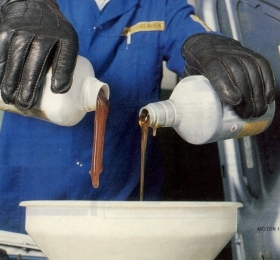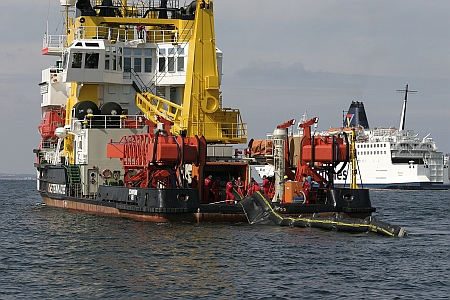Les types d'hydrocarbures (en anglais)
Types of Oil
Oil is not just one single substance - there are many different kinds of oil. The petroleum industry uses geographical locations to classify crude oils, such as North Sea Crude and Persian Gulf Crude. Oil from different geographical locations has its own unique properties, and varies in consistency from a light volatile fluid to a semi solid state. The types of oil differ from each other in their viscosity, volatility and toxicity.
Viscosity - refers to the oil's resistance to flow
Volatility - refers to how quickly the oil evaporates into the air
Toxicity - refers to how toxic the oil is to living organisms
When an oil spill occurs, the clean up and environmental affects are dependent upon the type of oil - and each oil type presents a different clean up procedure.
These are the four main oil types, and the problems that have to be faced when they are spilled:
1. Very Light Oils or Light Distillates
This oil type includes: Jet Fuel, Gasoline, Kerosene, Light Virgin Naphtha, Heavy Virgin Naphtha, Petroleum Ether, Petroleum Spirit, and Petroleum Naphtha.
These oil types are highly volatile, and normally evaporate within 2 days. With these oils there is a high concentration of toxic compounds, and the impact to water and intertidal organisms, such as clams, barnacles and mussels.
Clean up is not possible.
2. Light Oils or Middle Distillates
This oil type includes: Fuel Oil (grades 1 and 2), Diesel Fuel Oils (grades 1 and 2), Domestic Fuel, and Marine Gas Oil - Light Crude falls into this category.
Oils of this type are moderately volatile, and normally leave up to 1/3 of the spill after a few days. The toxic concentration is moderate, however the intertidal organisms will have long term contamination.
Clean up can be effective.
3. Medium Oils
Most crude oil falls into this category
This type of oil may cause long term, severe damage to fish, waterfowl, fur bearing animals and intertidal organisms. About 1/3 of medium oils evaporate within 24 hours.
Clean up is effective when done very quickly. The response time to a clean up of this type will greatly influence whether this oil type MAY or WILL adversely affect fish, birds, animals and other organisms.
4. Heavy Oils
This category includes heavy crude oil, Fuel Oil No. 3 & 4), Fuel Oil No. 5 (Bunker B), Fuel Oil No. 6 ( Bunker C), Marine Intermediate Fuel, and Marine Heavy Fuel.
There is little evaporation with heavy oils. Severe contamination of intertidal areas, along with fish, birds, and fur bearing mammals. Long term contamination of sediments are also possible. This oil type weathers very slowly.
Clean up is extremely difficult.

Oil Viscosity
Light Crude has a low concentration of wax. This type of oil is easier to pump and transport.
Sweet Crude has small amounts of hydrogen sulfide and carbon dioxide, and is used primarily in gasoline.
Heavy Crude usually contains high concentrations of sulfur and several metals, particularly nickel and vanadium (high amount of wax). These are the properties that make them difficult to pump out of the ground or through a pipeline and interfere with refining. These properties also present serious environmental challenges to the growth of heavy oil production and use.

Photo: APC Pettersen

